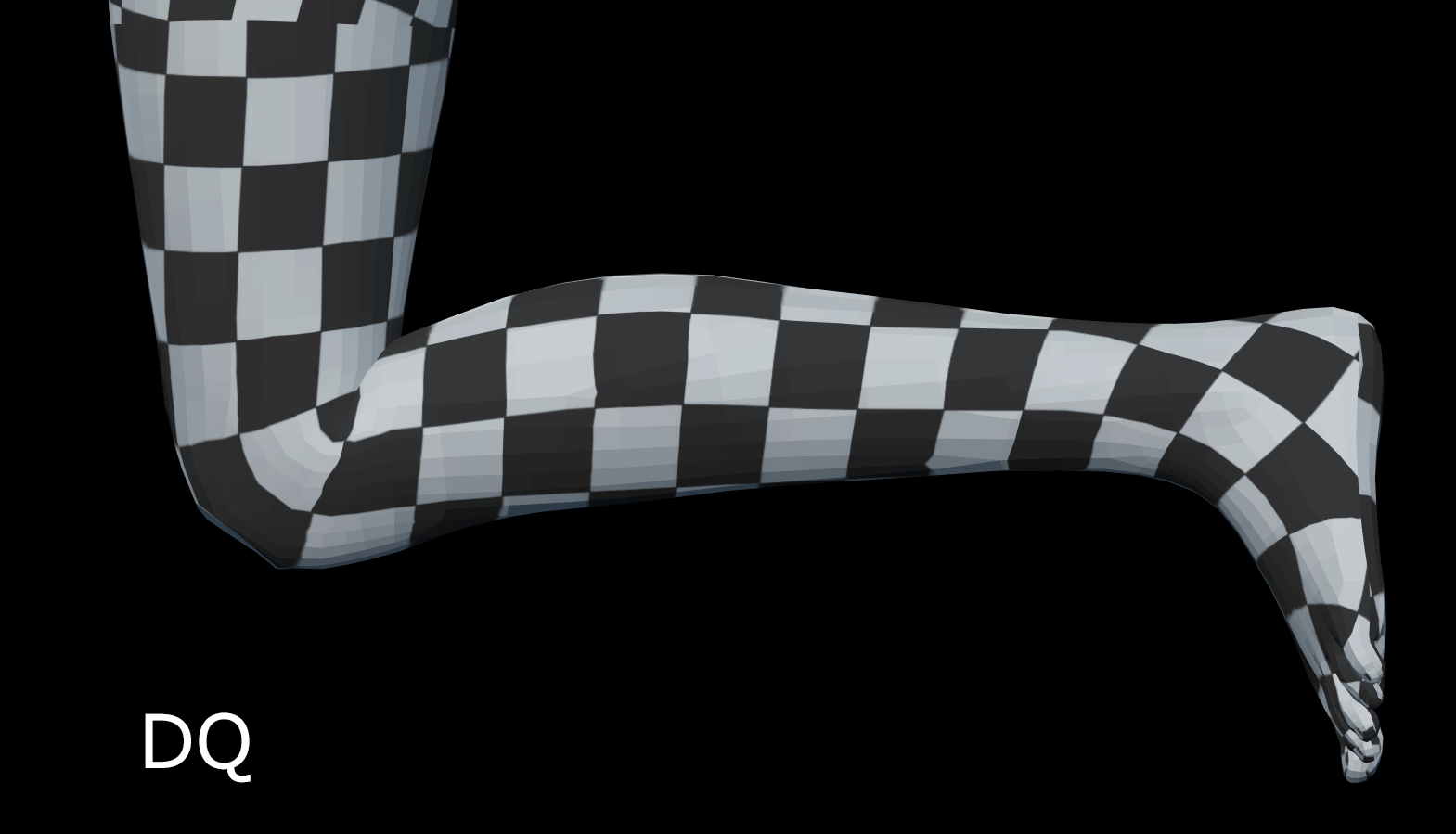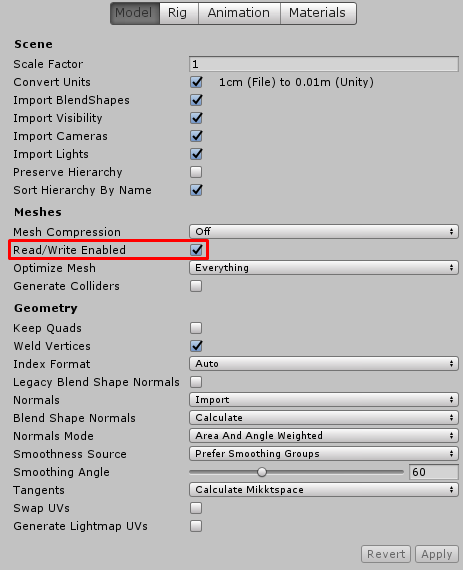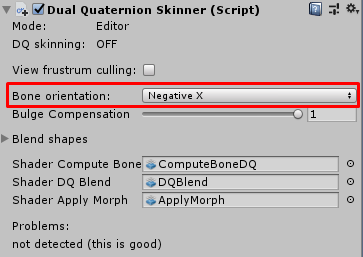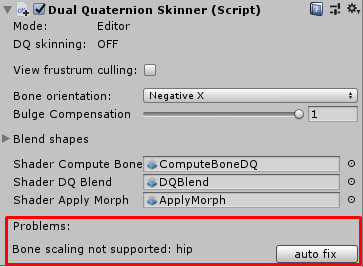- GPU skinning with compute shaders
- blend shape support (calculations performed in compute shader)
- works with any platform that supports compute shaders
- preserves volume with deformation (look comparison)
- zero GC allocations per frame
- original bulging compensation method
| Gif | Difference |
|---|---|
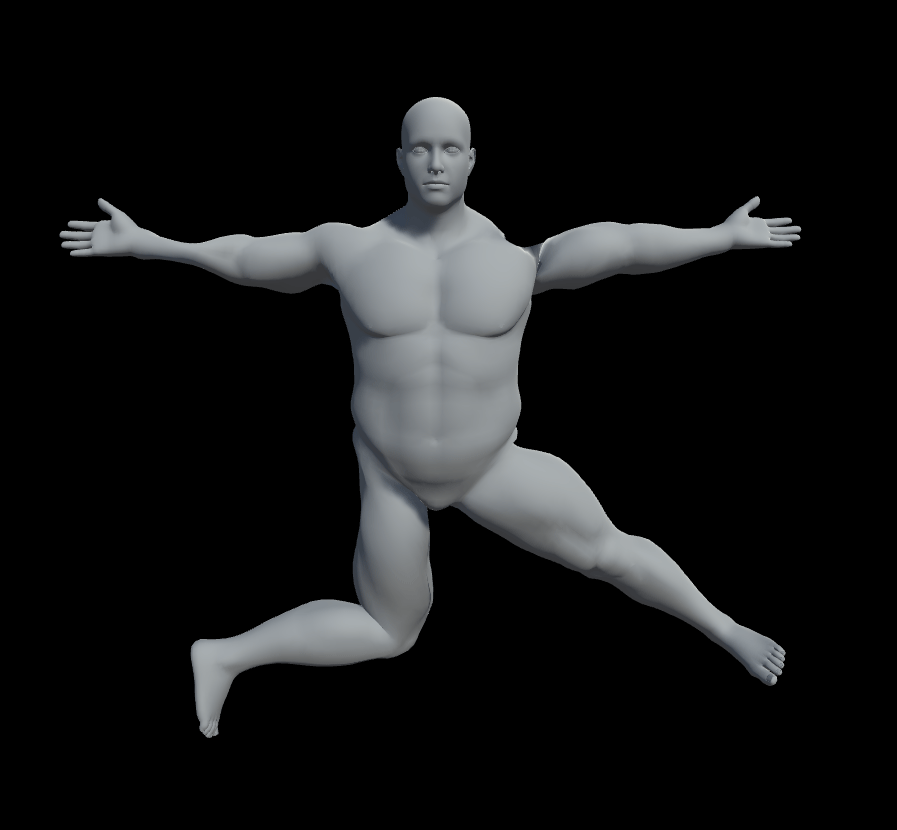 |
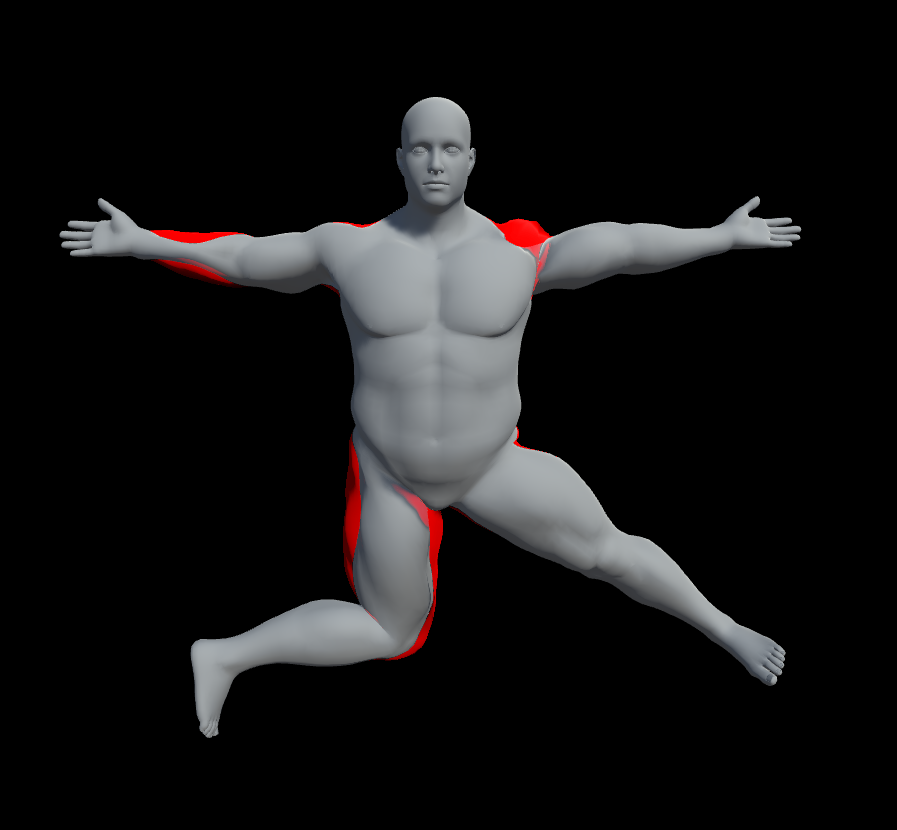 |
You will not see any effect in edit mode.
The scipt only works in play mode.
If you see no effect in play mode verify that you are using the right shader.
The script was tested with following Unity versions:
- 2020.1.0a13.1443 (earlier versions do not support
#pragma multi_compilein compute shaders)
- Create a skinned character with
SkinnedMeshRenderercomponent - Add
DualQuaternionSkinner.cscomponent (it will require aMeshFiltercomponent) - Enable mesh Read/Write in import settings
- All materials of the mesh should use a special shader to apply vertex positions. The shader is
MadCake/Material/Standard hacked for DQ skinning - In order for bulging compensation to work properly, all the character's bones must have one local axis (consistent for all bones) aligned with the limb controlled by the corresponding bone.
| Bones properly aligned | Bones not aligned |
|---|---|
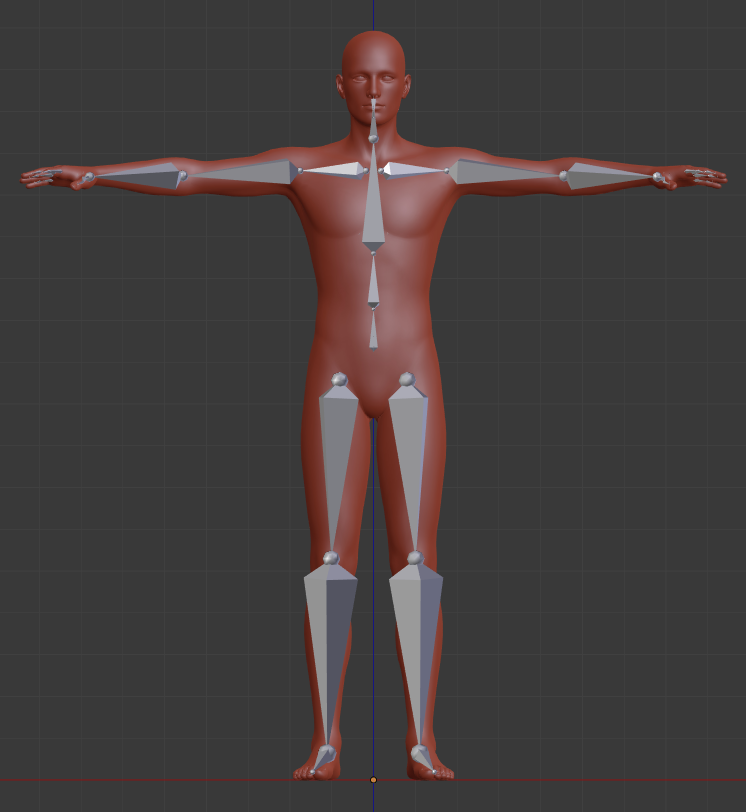 |
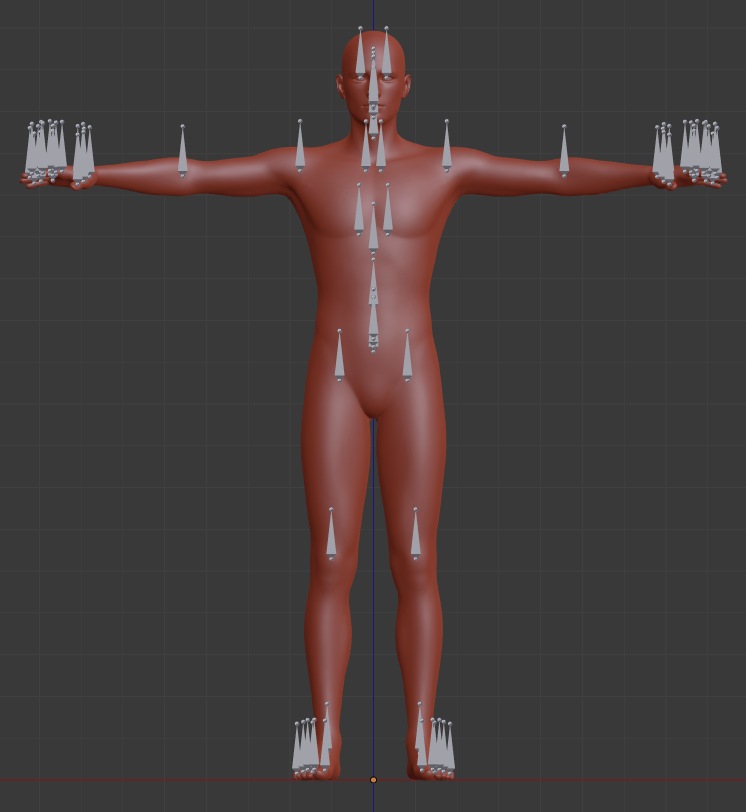 |
- Whichever local axis of the bones was aligned with the limbs must be selected in the script gui:
If bulging is increased instead of decreased, select same axis with different direction (X => Negative X)
The script is programmed to automatically detect common setup problems. Check out the editor:
Must use cullingMode = AlwaysAnimate in Animator. Otherwise, the mesh is treated as permanently invisible.
You can write a short script that will toggle cullingMode based on visibility to get proper culling.
My scripts uses SkinnedMeshRenderer to extract an array of bones from it. Yep, that's it.
The order of bones is unpredictable and does not depend on their hierarchy.
Only SkinnedMeshRenderer knows it ¯\_(ツ)_/¯
After extracting the bone array in Start() my script disables SkinnedMeshRenderer component as it is no longer needed. All the animations are performed by the script. You can verify it in the editor after hitting play button.
During my testing the amount of time spent on actual skinning was negligible compared to the amount of time extracting localToWorldMatrix from every bone in the hierarchy.
As long as you are not creating hundreds of characters with complex rigs (no matter the polycount) there should be no significant performance hit.
If anyone knows how to optimize extracting localToWorldMatrix of the bones please create an issue or message me on unity forum.
Works A LOT faster with IL2CPP, about 30% slower than built-in skinning in worst-case scenario according to my testing.
Alas it's complicated.
I added comments to "Standard hacked for DQ skinning" marking the alterations i made to the Standard shader.
You can try to do the same with your own shader to make it work with the script.
Feel free to contact me in this thread at unity forum if you need help.
I would also like to hear about your projects that use my script and your experience with it.
- Test/improve/optimize bulging compensation
- Implement toggle for bulging compensation
- Implement simple runtime switching between DualQuaternionSkinned and built-in SkinnedMeshRenderer
- Implement proper animation culling (see known bugs)
- It might make sense to group the data from all instances of the script into one batch and run the compute shaders only once per frame regardless of how many animated characters you have
If you have any questions, ideas, bug reports, or just want to discuss the script, you can contact me on unity forum
The bulging compensation method used is described in the article.
Notes:
- In formula (6) there is a mistake, x should be replaced by w_2 (there is no variable named x)
- Since publishing the article I found a better polynomial instead of (9), the coefficients are as follows: 2.2; -9.6; 10.4
- In formula (12) there are weird brackets around V_bisector. This is a software bug, they should be ignored. This happens multiple times later in the article.
- The stretched region of the model in Fig (7), that looks weird even after applying the fix (though is no longer jagged), is actually caused by using improperly prepared armature. The spine and the shoulder have different local axes aligned along the joint. This contradicts one of the requirements listed at the top of page 17.
